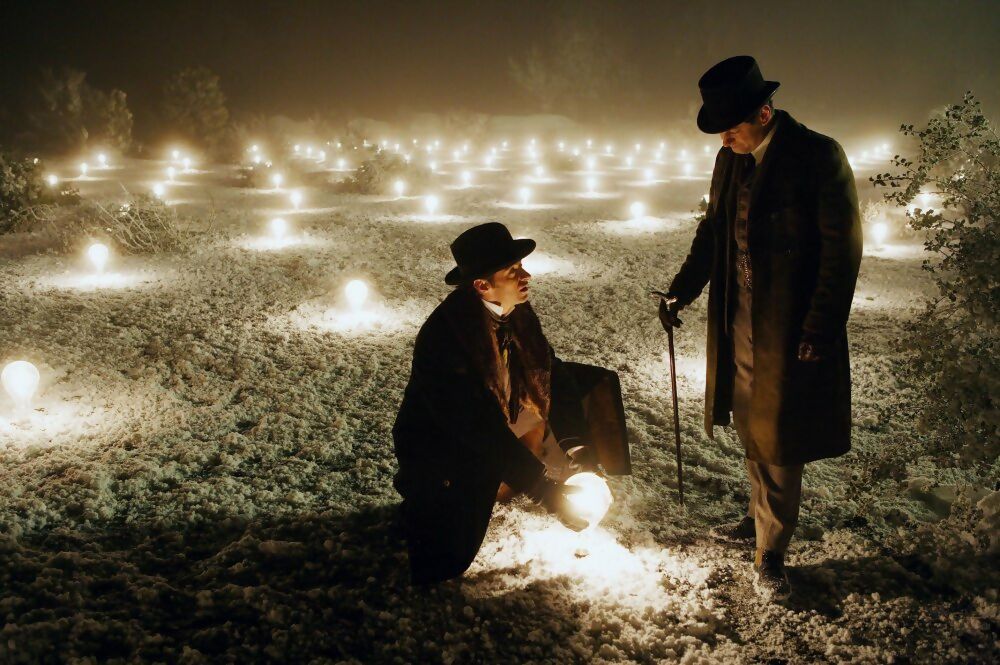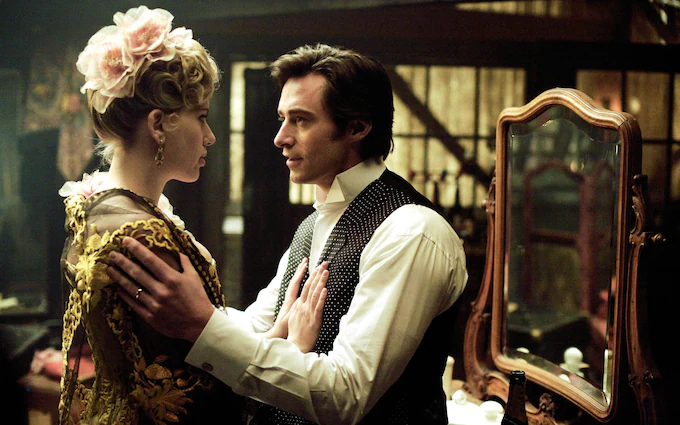Christopher Nolan’s “The Prestige” (2006) is a spellbinding tale of rivalry, obsession, and illusion that continues to captivate audiences nearly two decades after its release. This psychological thriller, starring Hugh Jackman and Christian Bale as dueling magicians in Victorian-era London, weaves a complex narrative that keeps viewers guessing until the very end.
Plot and Premise
“The Prestige” follows the bitter rivalry between two talented stage magicians, Robert Angier (Hugh Jackman) and Alfred Borden (Christian Bale). After a tragic accident during a performance, their professional competition evolves into a dangerous obsession to outdo one another, leading both men down a dark path of secrecy, sacrifice, and ultimate destruction.
The film’s non-linear structure, a hallmark of Nolan’s storytelling style, adds layers of mystery and intrigue. As the plot unfolds, we’re drawn into a world where nothing is as it seems, and every revelation leads to new questions.
Stellar Performances
Jackman and Bale deliver tour-de-force performances, embodying the obsessive nature of their characters with remarkable depth. Jackman’s Angier exudes charisma and desperation in equal measure, while Bale’s Borden is a study in quiet intensity and hidden depths.
The supporting cast is equally impressive, with Michael Caine as the seasoned ingénieur Cutter, providing a moral compass and grounding presence. Scarlett Johansson and Rebecca Hall bring nuance to their roles as the women caught in the magicians’ web of deceit.

Nolan’s Directorial Magic
Christopher Nolan’s direction is nothing short of masterful. He crafts a visually stunning period piece that seamlessly blends practical effects with subtle CGI, creating a world where magic feels tantalizingly real. The attention to detail in set design and costuming immerses viewers in the gritty glamour of Victorian London’s entertainment scene.
Nolan’s signature themes of obsession, identity, and the nature of reality are explored with surgical precision. The film itself becomes a magic trick, with the director expertly misdirecting the audience’s attention and saving the most shocking revelations for the final act.
A Script That Keeps You Guessing
The screenplay, adapted from Christopher Priest’s novel by Jonathan and Christopher Nolan, is a marvel of intricate plotting. Every line of dialogue, every scene, serves a purpose in the grand illusion. The script deftly balances character development with puzzle-box storytelling, rewarding attentive viewers with subtle clues and foreshadowing.
The film’s exploration of the three acts of a magic trick – the pledge, the turn, and the prestige – serves as both a structural device and a thematic throughline. This meta-commentary on the nature of storytelling and illusion adds depth to an already rich narrative.

Visual and Auditory Spectacle
Cinematographer Wally Pfister’s work is nothing short of breathtaking. The film’s muted color palette and chiaroscuro lighting create a mood of mystery and foreboding. From the grimy backstage areas to the opulent theater settings, every frame is composed with painterly precision.
David Julyan’s score complements the visuals perfectly, building tension and enhancing the film’s emotional impact without ever overpowering the on-screen action. The music becomes another tool in Nolan’s arsenal of misdirection, guiding the audience’s emotional responses.
Themes and Subtext
“The Prestige” is rich with thematic depth, exploring the costs of ambition, the nature of identity, and the thin line between science and magic. The film poses provocative questions about the ethics of progress and the lengths to



